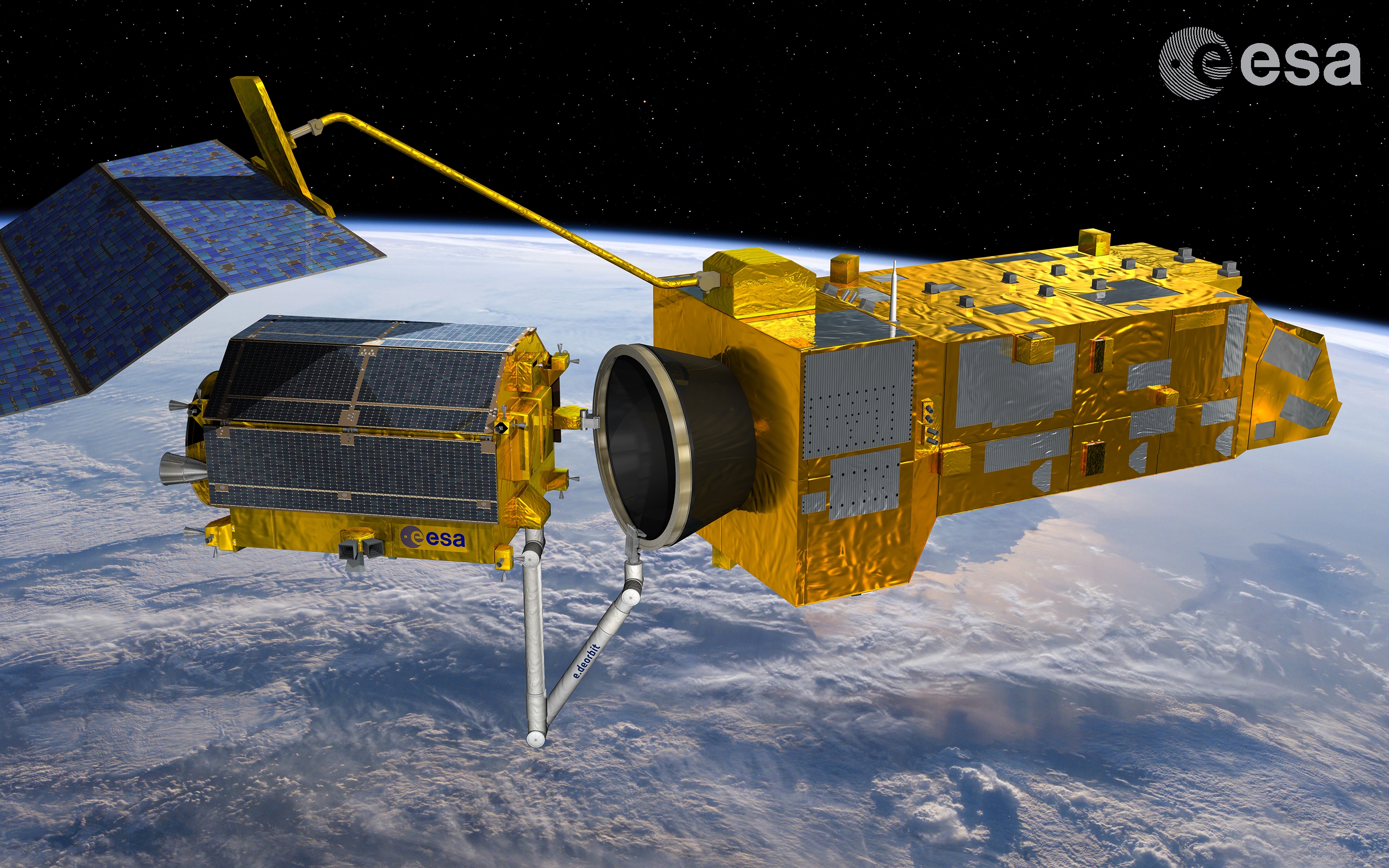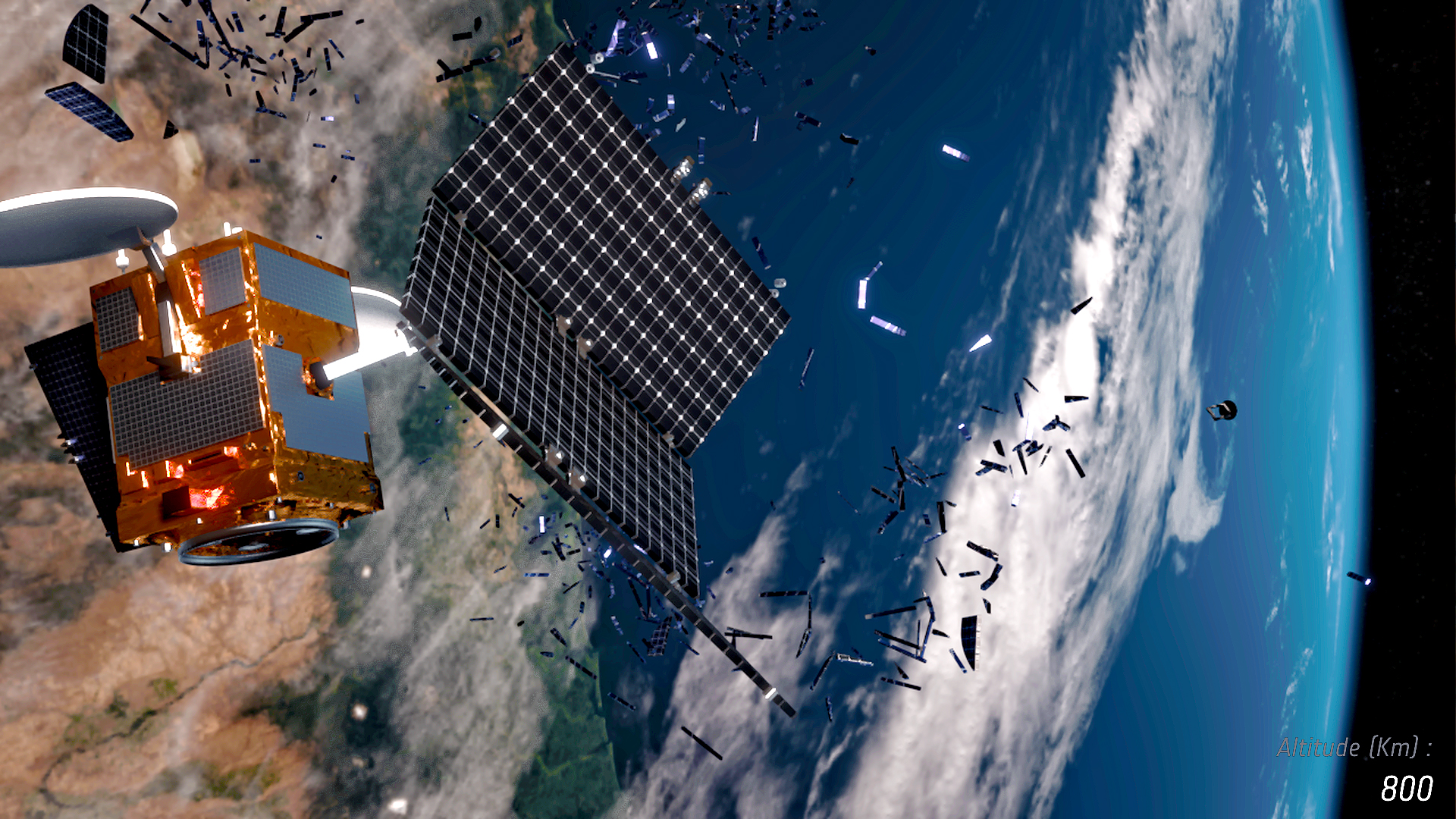Anyone concerned with the challenge of space debris came together at ESA’s ESOC mission control centre in Darmstadt, Germany, last month. Several topics dealt with Clean Space activities – CleanSat and e.Deorbit – but the single most important fact about the 7th European Conference on Space Debris was the fantastic platform it offered for discussion with global experts on the debris problem.
“We had the opportunity to meet with organisational and industrial partners from around the world and brainstorm about how to actively remove debris,” comments Andrew Wolahan of Clean Space. “No matter where they come from, everyone is focused on the same problem, so it gave us a lot of food for thought that will be invaluable for our future work.”
Four conference sessions dealt with active debris removal concepts and technologies, across various stages of development. Several in-orbit demonstration concepts were presented; in terms of technological maturity, the most mature is ESA’s e.Deorbit mission, with several presentations from the Agency and industrial partners that not only underlined the feasibility of its basic concept but also provided an update on the ongoing validation of key technologies.
A variety of innovative solutions are being developed under the e.Deorbit umbrella, including navigation toward uncooperative targets in difficult lighting conditions, synchronisation of the mission with a tumbling target, and capture and stabilisation using a robotic arm or other methods. All these solutions are also clearly applicable to other on-orbit servicing concepts, such as the space tug.

e.Deorbit clamping the target
Copyright: ESA-David Ducros
Other, more futuristic, concepts dealt with the removal of debris from geostationary orbit as well as initial ideas on active debris removal for large constellations of satellites.
One point was 100% clear: the space debris problem has been widely recognised as a major challenge that needs to be addressed as rapidly as possible. Active debris removal is only part of the solution; the other part – just as crucial – is to design future satellites in ways that will not produce further debris.

Satellite break-up
Copyright ESA/ID&Sense/ONiRiXEL , CC BY-SA 3.0 IGO
Space debris mitigation requirements have been adopted internationally, such as the French Space Operations Act and the ESA policy. ESA decided to anticipate rather than react to this rising level of regulation in terms of satellite design. The Agency is therefore carrying out a wide variety of studies to develop technologies for satellite passivation, deorbit them safely at their end-of-life and ensure they will burn up when reentering the atmosphere.
All these technologies are being developed through Clean Space’s CleanSat initiative. The conference saw three sessions dedicated to debris mitigation (SDM), with several papers addressing technical solutions to support the implementation of the existing and up-coming requirements on SDM as well as presentations highlighting the impacts of such rules on satellite design.
Last but not least, initial efforts were made to consider debris in the context of mission life cycles, and the potential of ‘ecodesign’ technologies.
Some ambitious ideas turned up in the discussion, such as the concept of developing an eco-label for satellites, as already used in many sectors, such as for manufacturing household appliances like washing machines. It sounds simple but represents a huge challenge to develop something applicable to space – the main questions arising being ‘to assess this, what do we measure, and how?’
Work will continue on multiple fronts; the one thing the conference made abundantly clear is that ESA and space entities worldwide are performing tremendous work to reduce the debris risk and maintain Earth’s space environment accessible and sustainable for future generations.





Discussion: one comment
How about using a large magnet to attract smaller pieces of debris